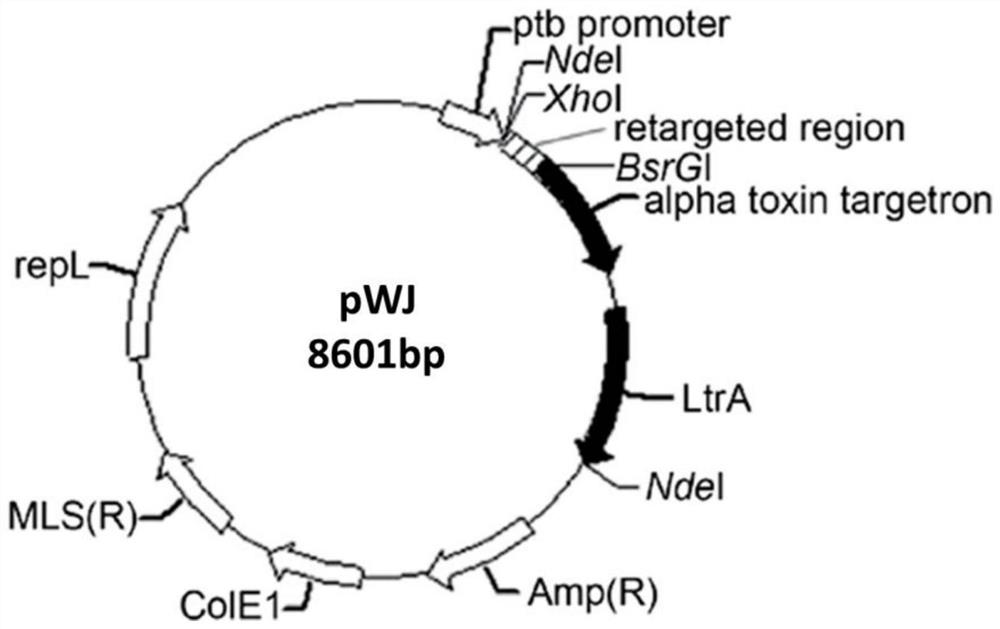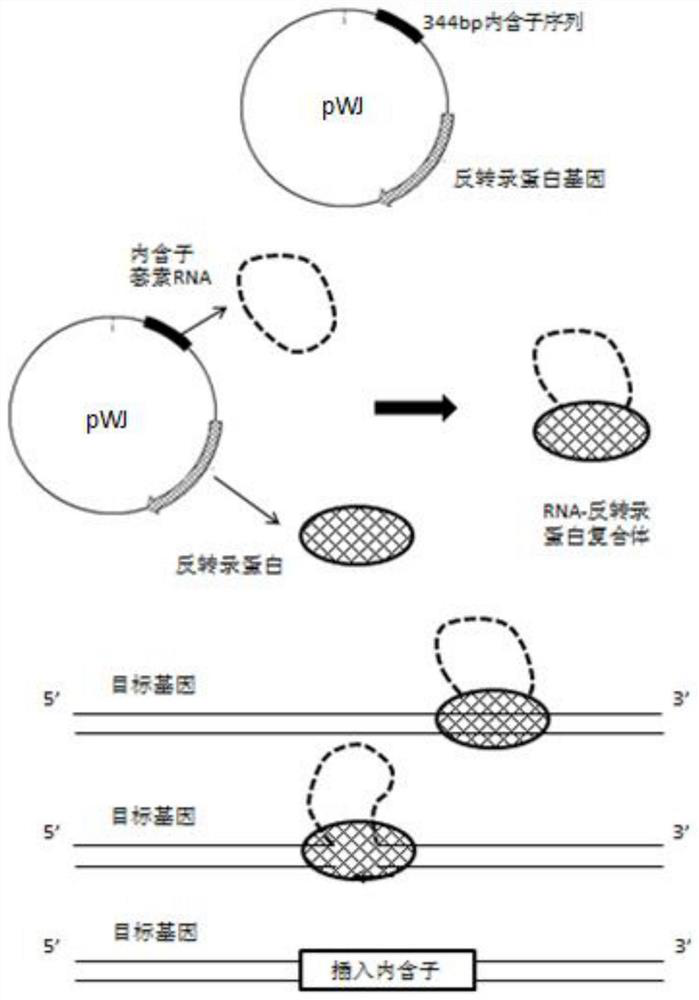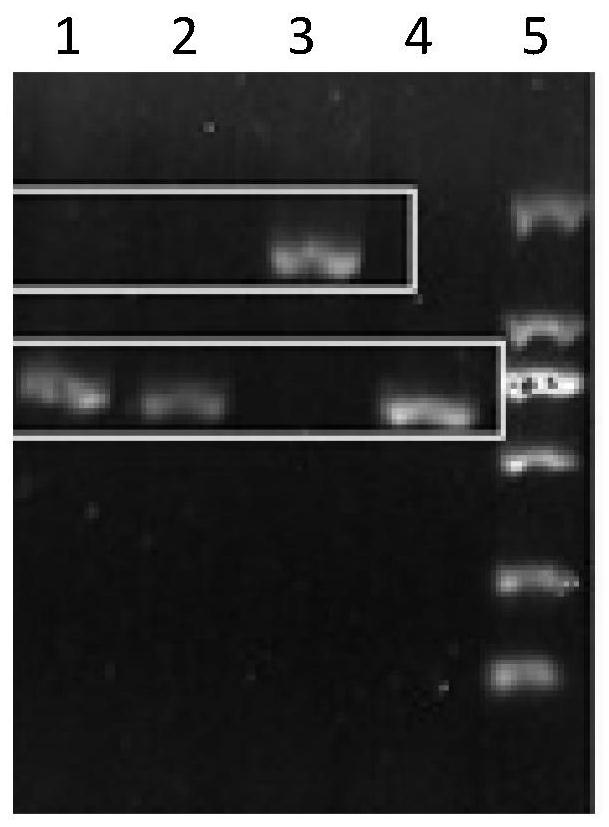Clostridium beijerinckii with high efficiency dechlorination of pentachlorophenol and its construction method and application
A technology of Clostridium beijerinckii and pentachlorophenol, applied in its construction method and application fields in the field of environmental protection, can solve problems such as teratogenicity, high toxicity, and mutagenicity
- Summary
- Abstract
- Description
- Claims
- Application Information
AI Technical Summary
Problems solved by technology
Method used
Image
Examples
Embodiment 1
[0026] Example 1: Construction of Clostridium beijerinckii Cbei_3304 gene insertion inactivation mutant.
[0027] The principle of constructing Clostridium beijerinckii Cbei_3304 gene insertion inactivation mutant strain is as follows figure 2 As shown, the specific construction process includes the following steps:
[0028] (1) Construction of Cbei_3304 insertion inactivation vector
[0029] 1) Design introns
[0030] According to the Cbei_3304 gene sequence (as shown in SEQ ID No: 1) of Clostridium beijerinckii included in the NCBI database, a suitable insertion gene site is designed by means of software ( http: / / www.clostron.com ), select the insertion between the 101st and 102nd bases, and generate an intron sequence, synthesize the intron sequence S-304 (its sequence is shown in SEQ ID NO: 2), and design the following primers.
[0031] Cloning primers:
[0032] pWJ-OSC-304-S: 5'-ggagtgtcgaggatc ctcgag ataattatccttacacttcgcc-3', its sequence is shown in SEQ ID NO: ...
Embodiment 2
[0050] Example 2: Dechlorination experiment of Clostridium beijerinckii to pentachlorophenol in simulated wastewater.
[0051] (1) Medium formula:
[0052] YPS medium: yeast powder 3g / L, peptone 5g / L, glucose 1g / L, ammonium acetate 2g / L, sodium chloride 3g / L, magnesium sulfate heptahydrate 3g / L, potassium dihydrogen phosphate 1g / L, phosphoric acid Dipotassium hydrogen 1g / L, ferrous sulfate heptahydrate 0.1g / L, pH=6.
[0053] Simulated wastewater: glucose 2g / L, potassium chloride 0.9g / L, ammonium chloride 1.0g / L, sodium dihydrogen phosphate monohydrate 0.6g / L, calcium chloride monohydrate 0.02g / L, yeast extract 0.05g / L L, electron mediator (MV) 0.15g / L, ferric citrate 6.44g / L, pentachlorophenol 3mg / L and trace elements (H 3 BO 3 3g / L, ZnSO 4 ·7H 2 O 0.9g / L, MnCl 2 2H 2 O 2.4g / L, CuSO 4 ·5H 2 O0.6g / L, CoCl 2 ·6H 2 O 3g / L, (NH 4 ) 6 Mo 7 o 24 2H 2 O 0.02g / L, NiCl 2 ·6H 2 (0.1g / L) 5ml / L.
[0054] (2) Activate Clostridium beijerinckii group bacteria M-3304 and i...
PUM
 Login to View More
Login to View More Abstract
Description
Claims
Application Information
 Login to View More
Login to View More - R&D
- Intellectual Property
- Life Sciences
- Materials
- Tech Scout
- Unparalleled Data Quality
- Higher Quality Content
- 60% Fewer Hallucinations
Browse by: Latest US Patents, China's latest patents, Technical Efficacy Thesaurus, Application Domain, Technology Topic, Popular Technical Reports.
© 2025 PatSnap. All rights reserved.Legal|Privacy policy|Modern Slavery Act Transparency Statement|Sitemap|About US| Contact US: help@patsnap.com



